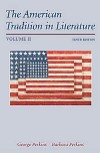"That Evening Sun" first appeared in The American Mercury magazine in March, 1931, and again in Collected Stories. Told from the perspective of Quentin Compson, one of the three children who populate The Sound and the Fury as older characters, the story relates the unfolding terror of Nancy, a black neighbor and sometime servant in the Compson household, who awaits her fate as the victim of her razor-wielding common-law husband, Jesus. Like "That Evening Sun," Faulkner's story, "Barn Burning," a tale set in 1890's, is told from the ironic perspective of a child. Colonel Sartoris Snopes, the young "Sarty," tumbles through episodes of frenetic and horrific intrigue, sponsored by a father, Abner, who seeks revenge through a series of barn burnings. An expressionistic work, "Barn Burning" employs so many of the experimental techniques-collective memory, tangential focus, alluvial flashbacks, situational irony, the synoptic snapshots-that came to characterize Faulkner's narrative style. |



 2003 McGraw-Hill Higher Education
2003 McGraw-Hill Higher Education